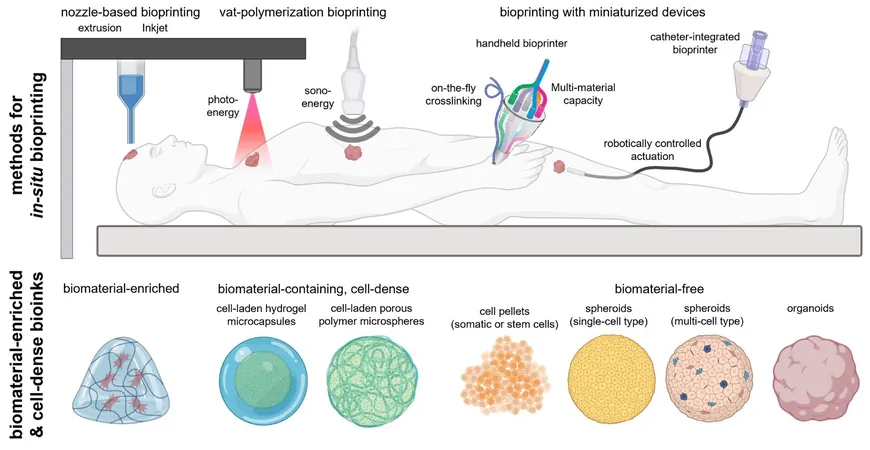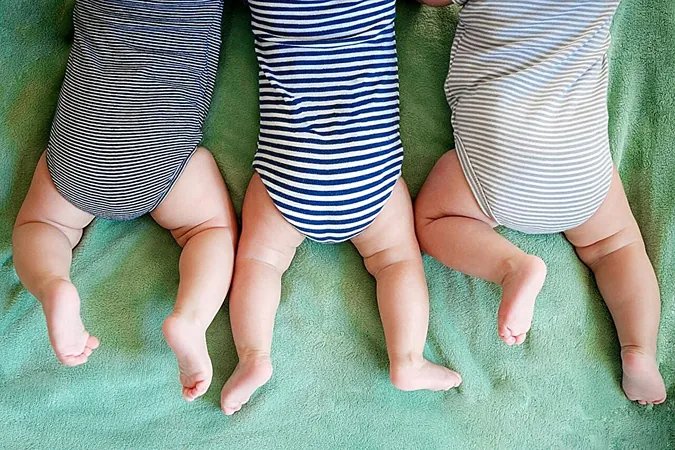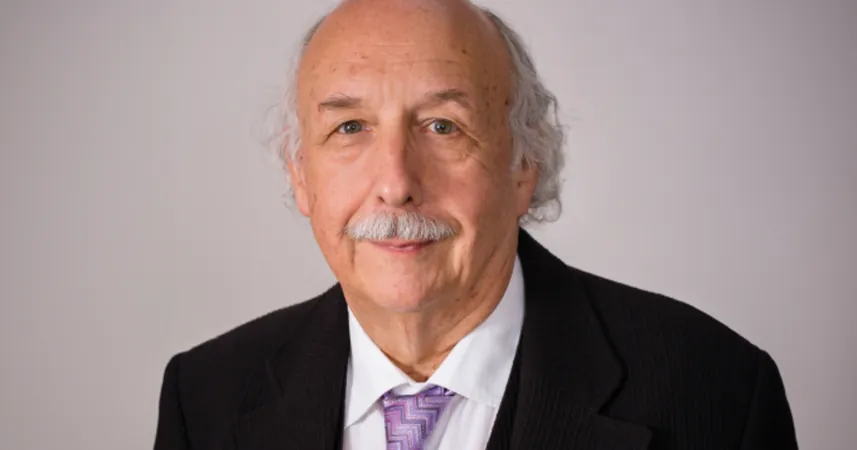
The Future of Healing: Bedside Bioprinting Set to Revolutionize Regenerative Medicine!
2024-11-05
Author: Sarah
A groundbreaking approach to regenerative medicine is on the horizon, and it's all thanks to innovative advancements in 3D bioprinting technology. In a recent collaborative article published in Science, Gorka Orive, a prominent researcher from the University of the Basque Country, dives into the exciting potentials and the significant challenges facing tissue regeneration through bioprinting.
One of the major hurdles identified by Orive and his colleagues is the inadequate cell density achieved during the printing process. For effective treatment, each type of tissue must exhibit specific characteristics, and achieving this through direct bedside biofabrication remains a top priority for researchers. This new frontier in medicine utilizes injected, grafted, or implanted cells that can effectively heal traumatic injuries and other conditions.
However, the journey from lab to clinical application is fraught with challenges. Ensuring that therapeutic cells make it to their targeted location while maintaining their survival and function is critical. The integration of these cells into the recipient's tissue adds another layer of complexity.
In collaboration with experts in biomaterials and bioprinting from Harvard University and the Technical University of Denmark, Orive and his team are exploring how bioprinting can be refined for greater clinical success. They are driven by the question: "How can we elevate this technology that's already well-regarded in the field to truly transformative applications in regenerative medicine?"
The analysis highlights that, unfortunately, current bioprinting methods yield a low cell load, which doesn’t reflect the higher cell densities found in human tissues. "When we fabricate cell structures with additive printing, we must confront the challenge of increasing the cell concentration," Orive argued, emphasizing the need for technology that can closely mimic the body’s natural conditions.
Moreover, the research underscores that different tissues—such as muscle and liver—possess unique characteristics and functionalities that require customized bioprinting processes. Adapting the 3D printing technology to suit each tissue type could mark a monumental advance in the field.
A critical aspect of future success will involve moving bioprinting from the controlled environment of the lab to the dynamic setting of clinical applications. Orive insists that regenerative therapies should not just remain theoretical or experimental; they should be immediately applicable to patients in need, either on-site or at their hospital bedsides.
While there are immense challenges ahead, Orive draws parallels to the past successes seen with stem cell therapy, which is now a staple in certain clinical settings for regenerative purposes. "Every significant advancement in science starts with a vision for what could be," he remarked. "Although the application of these bioprinting advancements may take time, the insights garnered from our research are paving the way for exciting opportunities in clinical regeneration."
This research stems from fundamental studies and emphasizes the need for collaborative, multidisciplinary teams. As the field of regenerative medicine progresses, the hope is that with continued exploration and innovation, personalized healing through bioprinting will soon be a reality, transforming how we approach injuries, chronic diseases, and tissue repair.
Stay tuned, as the world of medicine is on the brink of an exciting revolution—where the printer could very well become as vital as the surgeon!



 Brasil (PT)
Brasil (PT)
 Canada (EN)
Canada (EN)
 Chile (ES)
Chile (ES)
 España (ES)
España (ES)
 France (FR)
France (FR)
 Hong Kong (EN)
Hong Kong (EN)
 Italia (IT)
Italia (IT)
 日本 (JA)
日本 (JA)
 Magyarország (HU)
Magyarország (HU)
 Norge (NO)
Norge (NO)
 Polska (PL)
Polska (PL)
 Schweiz (DE)
Schweiz (DE)
 Singapore (EN)
Singapore (EN)
 Sverige (SV)
Sverige (SV)
 Suomi (FI)
Suomi (FI)
 Türkiye (TR)
Türkiye (TR)